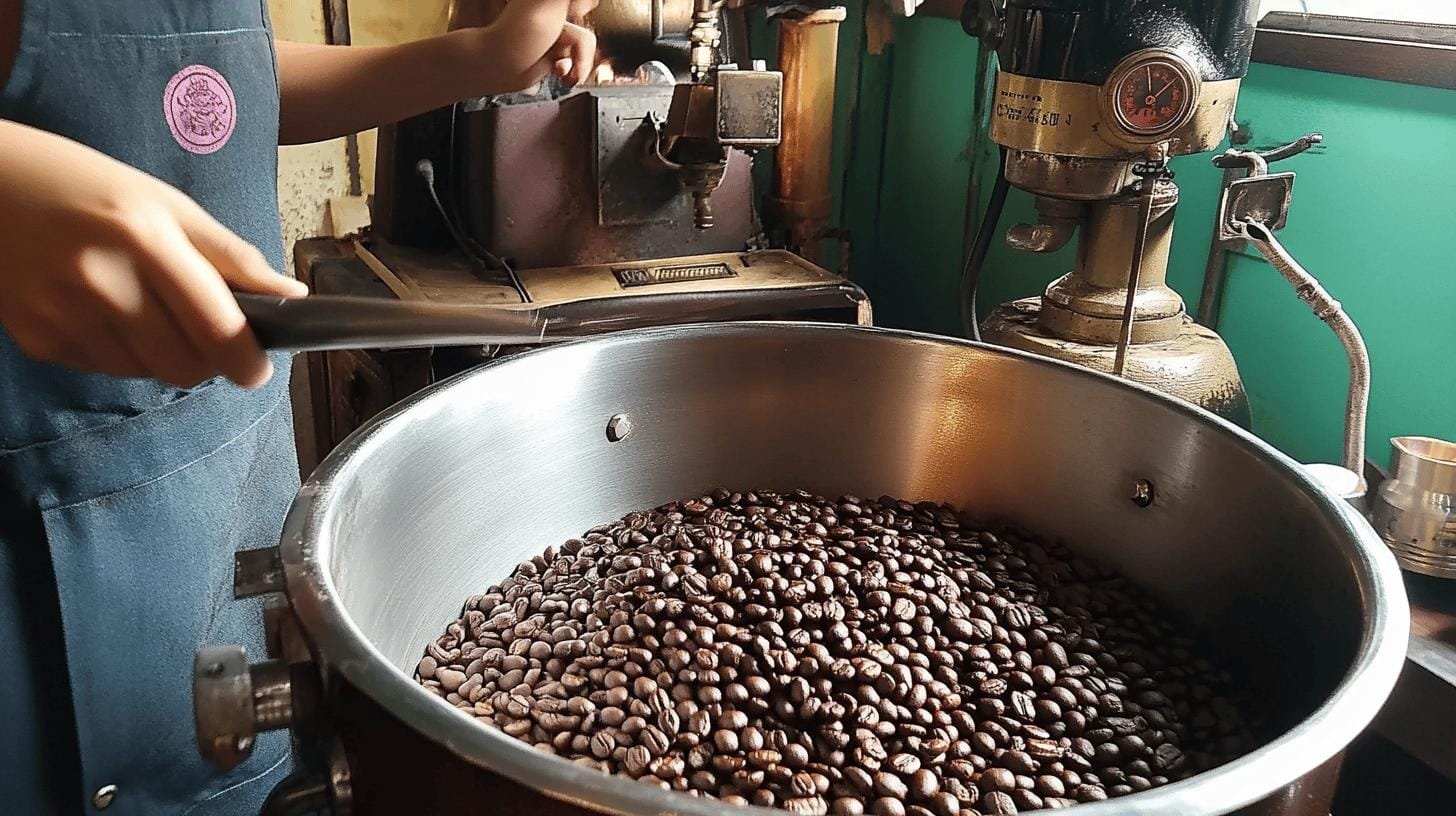
Artisanal Rituals for a Memorable Customer Experience
How can brands create a more balanced and memorable customer experience by blending artisanal product quality with thoughtful everyday rituals that keep people coming back?

What makes artisan coffee distinct, and where does artisan coffee come from? Delving into the world of high-quality beans reveals that the origin of artisan coffee spans a select group of countries known for their exceptional growing conditions. From the birthplace of coffee in Ethiopia to the balanced flavors of Colombia, each region contributes uniquely to the flavor profiles that coffee aficionados appreciate. This article explores the top origins of artisan coffee, highlighting the regions and practices that cultivate the remarkable beans enjoyed by connoisseurs worldwide. Discover how these origins shape the coffee you savor.
Artisan coffee comes from regions that offer perfect conditions for growing high-quality beans. These regions shape each cup’s flavor and complexity, making them famous worldwide.
Here are key countries and their notable coffee-producing areas:
Factors like climate, altitude, and soil in these regions influence the unique flavors of artisan coffee.

Climate plays a vital role in shaping artisan coffee’s flavors. The beans’ qualities result from specific conditions, including climate, altitude, and soil. These contribute to the coffee’s “terroir,” influencing its traits.
| Factor | Influence on Coffee |
|---|---|
| Altitude | Higher altitudes slow bean growth, enhancing flavor and acidity. |
| Soil Type | Volcanic soils add full-bodied flavor and aroma. |
| Rainfall | Consistent rain aids sweet and balanced growth. |
| Temperature | Moderate temperatures maintain flavor balance. |
Traditional farming methods also enhance artisan coffee quality. Hand-picking ensures the ripest beans, preserving flavor. Natural sun-drying keeps the beans’ natural traits intact. Unlike mass-produced coffee, which uses fast processing and machines, artisan coffee relies on time-honored methods, focusing on quality and sustainability.
Artisan coffee comes from regions with ideal conditions for quality beans. These include Ethiopia, Colombia, Brazil, and Guatemala, known for their climates and soil compositions that create unique flavors.
Ethiopia, as coffee’s birthplace, offers regions like Sidamo, Yirgacheffe, and Harrar, known for high-quality beans with floral to fruity tastes. Colombia boasts smooth, well-balanced coffee, especially from Huila and Antioquia. Brazil, the largest coffee producer, features regions like Minas Gerais and São Paulo, offering varied flavors due to its diverse climate. Guatemala, with regions like Antigua and Huehuetenango, provides rich, complex tastes from its volcanic soils.
In summary, these origins enrich artisan coffee with distinct flavors and complexity, showcasing each region’s unique environmental contributions.

Artisan coffee production commits to quality, sustainability, and traceability, ensuring high-quality beans and ethical practices from start to finish.
Home-roasted artisan coffee is superior because it allows for tailored roasting, ensuring freshness and unique flavors. By choosing home-roasted beans, coffee lovers enjoy a richer, more flavorful cup, reflecting the dedication in artisanal methods.
Direct trade supports coffee-growing communities by ensuring fair pay and ethical sourcing. This empowers farmers to invest in sustainable methods, improving their livelihoods. Cutting out middlemen creates transparent, beneficial relationships between farmers and roasters.
| Aspect | Impact |
|---|---|
| Economic Impact | Boosts local economies through fair trade and direct farmer payments. |
| Cultural Influence | Promotes appreciation of diverse coffee traditions globally. |
| Environmental Sustainability | Encourages eco-friendly farming and conservation efforts. |
The artisan coffee movement prompts a consumer shift toward high-quality, ethically sourced coffee, enhancing global coffee culture. It emphasizes the importance of origin, flavor, and craftsmanship. Consumers now value transparency and sustainability, creating demand for small-batch coffees reflecting producers’ dedication.
Artisan coffee fosters community connections by emphasizing shared values. Local coffee shops and roasters become community hubs, uniting people over quality coffee. This focus extends beyond sipping, creating lasting bonds that support sustainability and celebrate coffee-growing culture.
Exploring where artisan coffee comes from unravels a tapestry of unique flavors, influenced by diverse regions and climates. The meticulous farming practices and small-batch roasting techniques create quality and depth in every cup. Artisanal production sharply contrasts with commercial alternatives, focusing on sustainability and high-grade beans.
Globally, the artisan coffee culture connects farmers and consumers through direct trade relationships, underscoring ethical sourcing and community involvement. As more individuals embrace this movement, the appreciation for quality and balanced coffee continues to grow, enriching the global coffee experience.
An artisan coffee refers to coffee that is crafted with a focus on quality, using traditional methods in small batches to enhance its flavor profile and aromatic qualities. This approach contrasts with mass-produced coffee.
Artisan coffee emphasizes craft techniques and small-batch production, while specialty coffee refers to the high-quality grading of beans through standardized scoring. Both prioritize flavor, but artisan focuses on the process too.
High-quality artisan coffee is sourced from regions with ideal coffee-growing conditions, such as Ethiopia, Colombia, Brazil, and Guatemala. These areas are renowned for distinct flavors and premium beans.
Well-known artisan coffee brands include Stumptown, Blue Bottle, and Intelligentsia, all recognized for their commitment to quality, sustainability, and direct trade relationships with coffee producers.
Artisan coffee production uses selective hand-picking, small-batch roasting, and manual brewing techniques, emphasizing each step’s role in flavor development to achieve smoothness and complexity in every cup.

How can brands create a more balanced and memorable customer experience by blending artisanal product quality with thoughtful everyday rituals that keep people coming back?

Independent coffee shops have always been about more than caffeine—they’re hubs of creativity, connection, and care. As café culture continues to evolve, new trends are

Introduction Independent cafes win when they feel like the neighborhood’s living room and operate with the discipline of a great kitchen. Below is a quick

Discover how top specialty coffee brands create lasting loyalty through storytelling, sourcing, and community connection. Real tips from 6 industry experts.

Discover the ultimate showdown between two beloved coffee brewing methods: the French press and Chemex. Explore how each technique caters to distinct palates, with the French press delivering bold flavors and the Chemex presenting a bright, clean taste.

Unlock the secrets to brewing the perfect cup of coffee with our comprehensive guide on using a coffee scale. Discover how precise measurements enhance flavor and consistency while eliminating bitterness.

Discover how water temperature plays a vital role in brewing the perfect cup of coffee. This article delves into the ideal temperature range of 195°F to 205°F for optimal flavor extraction, enhancing the enjoyment of high-quality beans.

Discover the world of curated specialty coffee bundles, perfect for enthusiasts seeking quality and craftsmanship. This article explores the benefits of ethically sourced, small-batch beans from brands like Equipoise Coffee, offering diverse flavor profiles that elevate your brewing experience.

Discover the art of manual brewing to elevate your coffee experience! This article explores various techniques like pour-over, French press, and AeroPress, revealing how they enhance flavor and your connection to every cup.